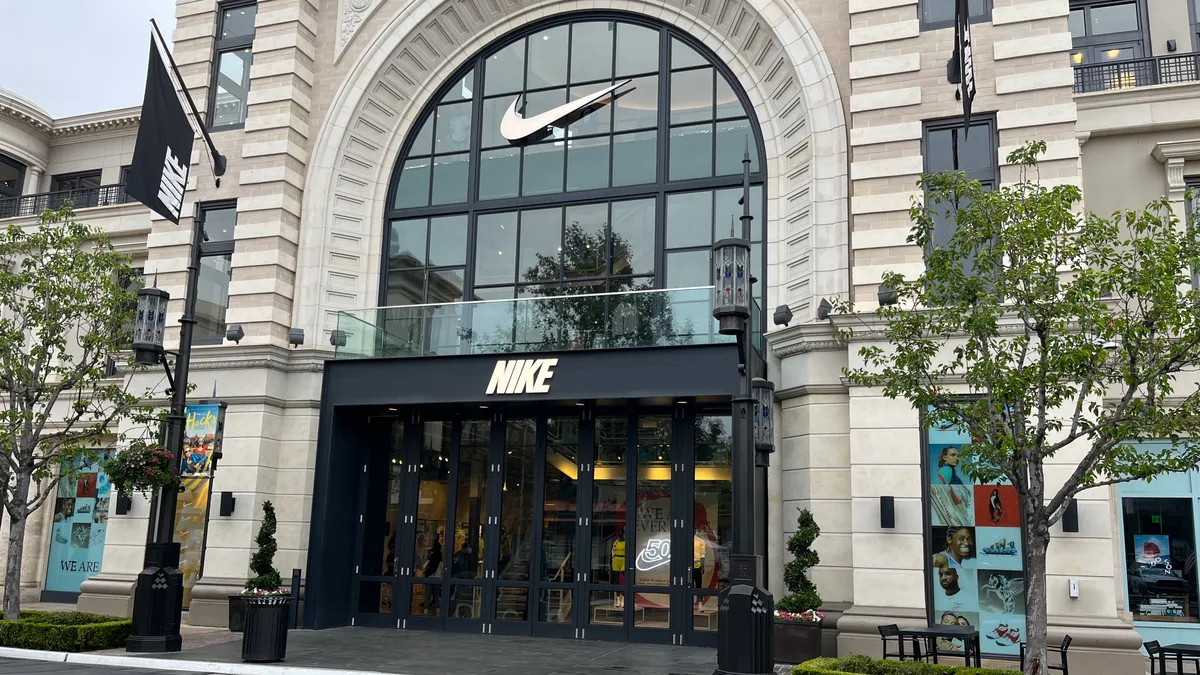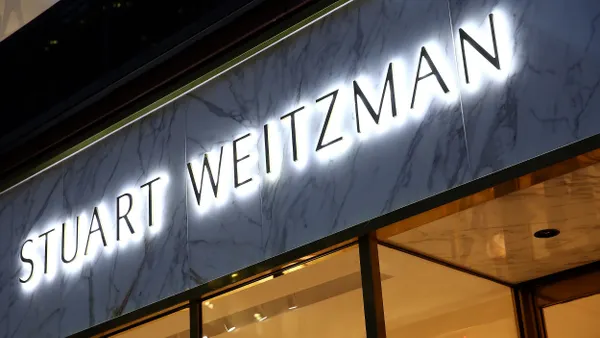Dive Brief:
- Almost two weeks after Nike revealed its plan to replace CEO John Donahoe with longtime veteran Elliott Hill, the sportswear giant reported a rough first quarter that saw revenues down 10% year over year to $11.6 billion.
- The DTC business was hit particularly hard, with Nike Direct revenue down 13% in the quarter due mostly to a 20% decline in the retailer’s digital business. Wholesale revenue was also down, falling 8% to $6.4 billion, according to a company press release.
- Nike revoked its full-year guidance in light of the leadership transition, but Chief Financial Officer Matt Friend said on a call with analysts that the retailer’s “revenue expectations have moderated since the start of the year.” In Q4, Nike was already expecting revenue to be down by mid-single digits for the year.
Dive Insight:
In its last two weeks with Donahoe at the helm, all the focus in Nike’s most recent earnings call was on the return of 30-year Nike veteran Hill.
While Friend started off the call by saying the company “deeply appreciate John’s contributions to Nike,” the praise for Hill was strong. Friend called the executive “a beloved Nike veteran who brings a powerful connection to our employees and culture,” and said Hill leads “with a passion that inspires the best from the team.” He added that there is a palpable enthusiasm for Hill’s return within Nike’s headquarters, as well as from retail partners.
“We expect that the return to strong growth will take time, but we believe that we have all the right building blocks, especially with Elliott now leading us forward,” Friend said.
The sportswear giant is already at work fixing a host of problems, including a return to more powerful brand marketing and a stronger product innovation pipeline. In addition, Nike has pulled back on its core footwear franchises, Air Force 1, Air Jordan 1 and Dunk, to tighten up supply, mostly in its own channels. Those products declined nearly 50% year over year in Nike’s digital business, driving much of the decline in that channel, though wholesale trends were better.
The retailer also acknowledged missteps in its running business, with Friend calling that category “one of the toughest fights” over the past couple of years. Nike saw positive growth in the segment in Q1, but Friend acknowledged the company had lost market share over the years and still hadn’t made as much progress with everyday runners as it would like.
“It is incredibly important to Nike. Nike is a running company. Nike is a running brand,” Friend said. “And it’s incredibly important for Nike to win with runners.”
Nike continues to address challenges caused by its pivot to DTC, but Friend noted encouraging signs from rebuilding its wholesale relationships and said it continues to look for ways to make Nike Direct more profitable. Friend also likened the actions Nike is taking now to work more closely with wholesale partners to similar moves the company took to reignite growth in North America back in 2010, when Hill was leading the region.
“We reprofiled the marketplace around sport to ignite growth in the marketplace and the net result of that was double-digit growth over the next four years,” Friend said of that time period. “Digital is still, and direct is still an important part of our overall marketplace strategy. Having direct connections with consumers is strategically important. But our consumers want to connect directly with Nike, whether it’s in our own channel or with a partner.”
Even acknowledging its problem areas, a turnaround isn’t in the immediate future. Friend highlighted that the retailer has seen some promising results, but noted that “a comeback at this scale takes time.”
GlobalData Managing Director Neil Saunders said much the same thing, noting that there aren’t “quick solutions” to the issues Nike is facing.
“The company is too big and cumbersome, and the issues too deeply engrained, to enact a quick turnaround,” Saunders said in emailed comments. “Moreover, areas like innovation pipelines are intricate processes that can only be hurried to a certain extent. This leaves Nike facing a year of poor performance with only a promise of better things to come.”













